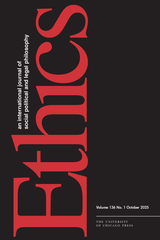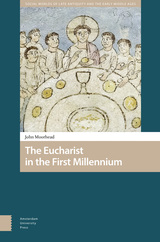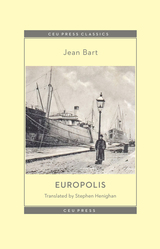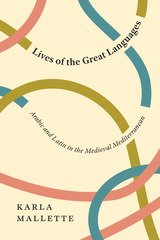
In this ambitious book, Karla Mallette studies the nature and behaviors of the medieval cosmopolitan languages of learning—classical Arabic and medieval Latin—as they crossed the Mediterranean. Through anecdotes of relationships among writers, compilers, translators, commentators, and copyists, Mallette tells a complex story about the transmission of knowledge in the period before the emergence of a national language system in the late Middle Ages and early modernity.
Mallette shows how the elite languages of learning and culture were only tenuously related to the languages of everyday life. These languages took years of study to master, marking the passage from intellectual childhood to maturity. In a coda to the book, Mallette speculates on the afterlife of cosmopolitan languages in the twenty-first century, the perils of monolingualism, and the ethics of language choice. The book offers insight for anyone interested in rethinking linguistic and literary tradition, the transmission of ideas, and cultural expression in an increasingly multilingual world.

The Medieval Mediterranean was first published in 1991. Minnesota Archive Editions uses digital technology to make long-unavailable books once again accessible, and are published unaltered from the original University of Minnesota Press editions.
"Three faiths—Jewish, Christian, and Muslim—became the dominant religions of western civilization in the course of the Middle Ages. Within each, there is and was great cultural and ethnic diversity. The complex relationships today among Jews, Christians, and Muslims in the Mediterranean, the tensions and attempts at resolution of conflicts among these groups, have their roots in the Middle Ages."
Contributors: Oleg Grabar, The Meaning of the Dome of the Rock; Oliver Nicholson, Golden Age and the End of the World: Myths of Mediterranean Life from Lactantius to Joshua the Stylite; Ivan Havener, OSB, Two Early Anecdotes Concerning Gregory the Great from the Greek Tradition; Catherine B. Asher, The Public Baths of Medieval Spain: An Architectural Study; Jonathan M. Bloom, The Revival of Early Islamic Architecture by the Umayyads of Spain; Marvin Mills, Scenario for a Roman Provenance for the Mosque of Cordoba; Sybil H. Mintz, The Carpet Pages of the Spanish-Hebrew Farhi Bible; Ann Thorson Walton, The Three Hebrew Children in the Fiery Furnace: A Study of Christian Iconography; W. Eugene Kleinbauer, Pre-Carolingian Concepts of Architectural Planning; Clara Estow, Iberia and North Africa: A Comparative View of Religious and Sexual Discrimination in a Medieval Plural Society; Moshe Sokolow, Arabic Books in Jewish Libraries: The Evidence of Genizah Booklist; Leslie S. B. MacCoull, Coptic Alchemy and Craft Technology in Islamic Egypt: The Papyrological Evidence; Thomas S. Noonan, Technology Transfer Between Byzantium and Eastern Europe: A Case Study of the Glass Industry in Early Russia; Stephanie Cain Van D'Elden, Black and White: Contact with the Mediterranean World in Medieval German Narrative; Gerhard Weiss, The Pilgrim as Tourist: Travels to the Holy Land as Reflected in the Published Accounts of German Pilgrims Between 1450 and 1550
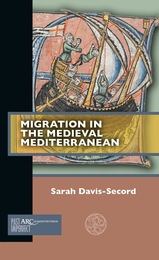
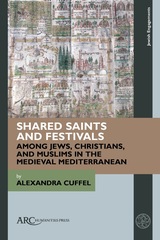
READERS
Browse our collection.
PUBLISHERS
See BiblioVault's publisher services.
STUDENT SERVICES
Files for college accessibility offices.
UChicago Accessibility Resources
home | accessibility | search | about | contact us
BiblioVault ® 2001 - 2025
The University of Chicago Press




